Costa Rica: Caribbean Mountains to Coast
Highlights
Highlights
- Wonderful birdwatching at mid-to-low elevations awards us with a stunning diversity of not just birds, but mammals, reptiles, amphibians, insects and even fish!
- A chance to see and photograph some of the world’s most colourful birds, but also some of the most elusive, such as antbirds.
- Raptor migration with the passage of millions of hawks en route to their wintering grounds.
- Devout coffee drinkers can enjoy a short tour of a family-run finca while sipping on a freshly-brewed café, and bring some home too!
Map
Map
Overview
Tour Overview
A small country that packs a giant biodiversity punch, Costa Rica is considered one of the most—if not the most—diverse country on the planet by land area! Owing to its tropical latitude, varied topography and microclimates, and an enviable amount of protected areas, there is no better place to enjoy a good day’s worth of birding for the level of effort involved. And within this magnificent country, there is nowhere more diverse than the Caribbean slope and lowlands.
From the cloud forests of Tapanti Reserve to the sandy shores of Cahuita, up to the rolling foothills, we take in some of the most exciting birdwatching sites this country has to offer. At this time of year, raptor and passerine migration is in full swing and is an underestimated natural phenomenon that can provide hours of entertainment with the restless birds doing all the work! We combine seeing these alongside less familiar tropical resident birds such as macaws, toucans, owls and antbirds to name a few. We will soak in the vistas of the pyramidal Volcan Arenal and stay on the grounds of a top birding site, Arenal Observatory Lodge, where Great Curassows can be seen from the breakfast table. Along our relatively short route (we only cover one side of the country, after all!), we will have a special opportunity to visit a local farm and explore a wonderful array of tropical orchids.
On top of its astonishing diversity, Costa Rica offers a first-class health care system, comfortable accommodation, solid infrastructure and peaceful policies. This, in combination with the untapped naturalist’s dream that is the Caribbean side, prompts us to offer this exciting new Costa Rica Caribbean birding tour!
Dates & Prices
DATES & PRICES
What's Included
What's Included
Tour Price Includes
- All accommodation
- All meals and soft drinks
- Ground transportation (air conditioned bus with driver)
- 4 - 8 participants with one guide, 9 - 12 with two guides
- All park, conservation and entrance fees
- Gratuities to local drivers
Tour Price Does Not Include
- Flights to and from San José
- Shuttle from airport to hotel on arrival in San Jose
- Travel Insurance
- Items of a personal nature
- Alcoholic beverages
Gallery
Gallery





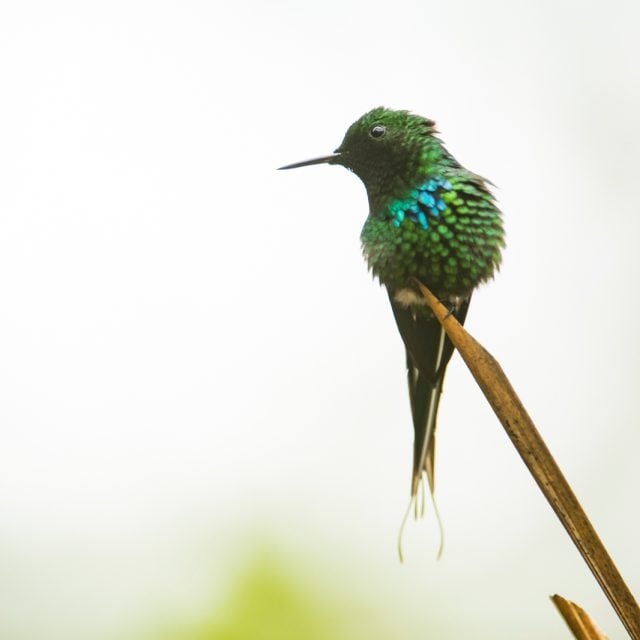






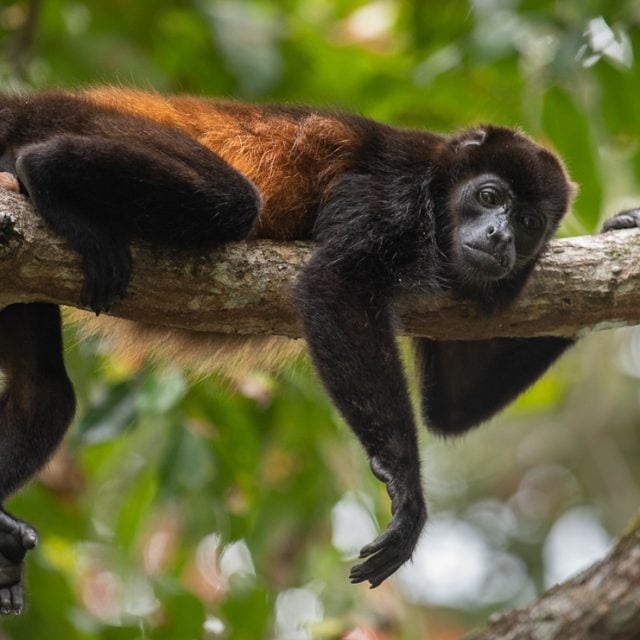


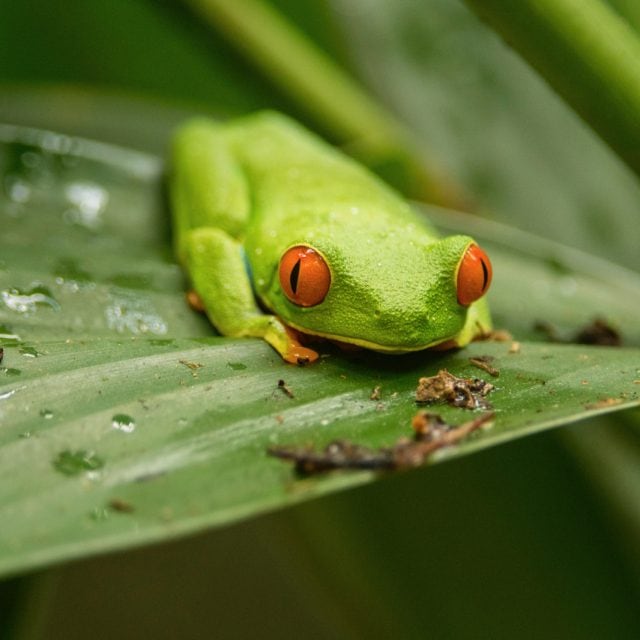

Itinerary
Itinerary
Day 1: Arrival in San José
Our Costa Rica Caribbean birding tour begins with late-afternoon birding on the hotel grounds, orientation and dinner at our hotel near the airport in Heredia. Participants arriving early can further enjoy the beautiful hotel grounds, welcomed by motmots, parakeets and Costa Rica’s national bird, the Clay-colored Thrush. The hotel has a list of nearly 300 species just from the grounds alone! Night in San José.
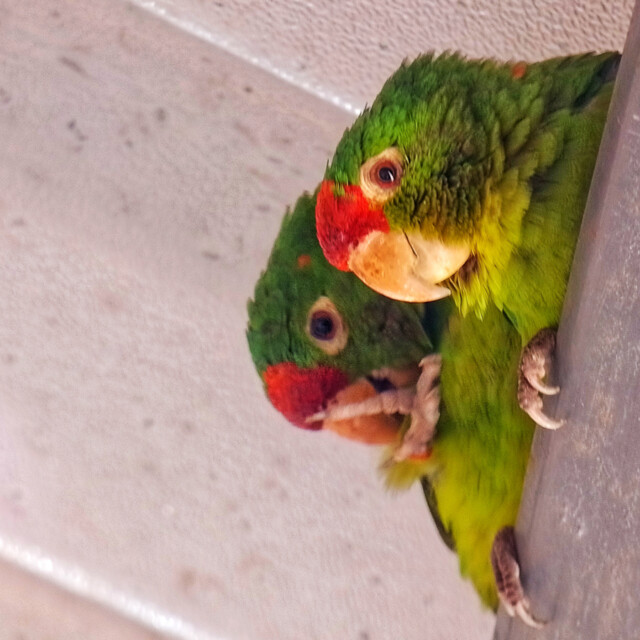
Days 2: Irazú Volcano
After some early birding looking for one of Costa Rica’s endangered endemic birds, the Cabanis’s Ground-Sparrow, we depart for the slopes of Irazú Volcano. The cloud forests and the alpine-like páramo of the Costa Rican Highlands are a spectacular and unique ecosystems, full of new birds. The vegetation is varied, with alder forests giving way to so-called elfin woodlands. Up here the trees drip with epiphytes and dew, and orchids are plentiful. The views are decent—from some summits it is possible to see both the Caribbean and the Pacific! Today we will focus on our search for a new suite of highland birds. Some of these include: Ruddy Treerunner, Buffy Tuftedcheek, Black-capped Flycatcher, Collared Redstart, Large-footed Finch, Red-tailed Hawk, Golden-browed Chlorophonia and with luck, Long-tailed and Black-and-yellow Silky-Flycatchers.
Our primary target, however, is the Resplendent Quetzal, a bird on most birders’ bucket lists. It is easily one of the most stunning animals in the world, and we sleuth out recent nesting sites or fruiting trees to prioritize on finding this majestic beauty. If the weather permits we will explore the higher parts of the mountain to look for Volcano Junco, Flame-throated Warbler, Sooty Thrush, Fiery-throated Volcano and Talamanca Hummingbird. All of these are regional endemics, tied to the cordilleras in this part of Central America. Night near Paraíso.
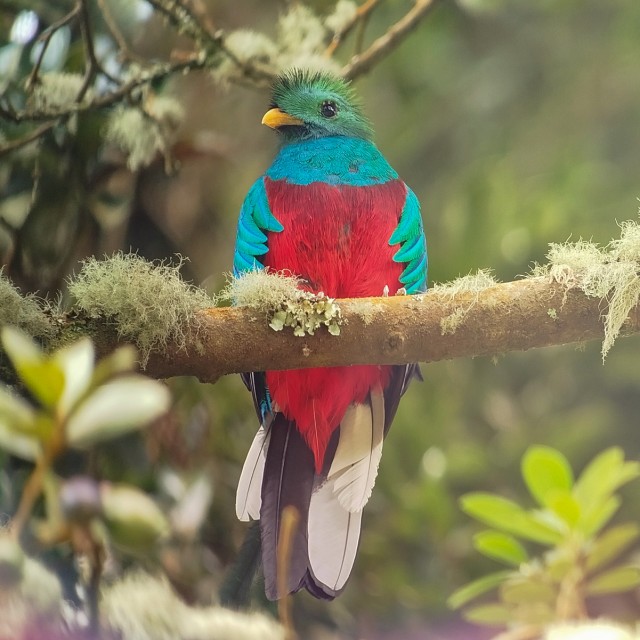
Days 3: Tausito
The next morning we will explore the foothill and middle elevation forests near Tausito and El Copal Reserve. After an early breakfast we drive to the rural village called Tausito where we will spend the morning in one of the most diverse habitats in the world. Here we will be especially looking for mixed-species flocks dominated by dozens of colorful tanagers such as Emerald, Speckled, Bay-headed, Silver-throated, Black-and-yellow and Tawny-crested, Wood creepers such as Cocoa, Wedge-billed, Northern-barred and Brown-billed Scythebill, and a multitude of flycatchers including Tawny-chested. It is also a great place for several species of trogons including Gartered, Black-throated and Slaty-tailed and one of the coolest hummingbirds, the tiny Snowcap!
We will also be looking closely for any raptors such as Ornate and Black Hawk-Eagle, White and Barred Hawk that may be soaring in the valley below us. After lunch we will bird the agricultural fields near Ujarrás where we will look for the unique Hook-billed Kite and the pair of Bat Falcons that live on the Cachí dam. If we feel up for a night drive we may find Common Pauraque and Striped Owl. Night near Paraiso.
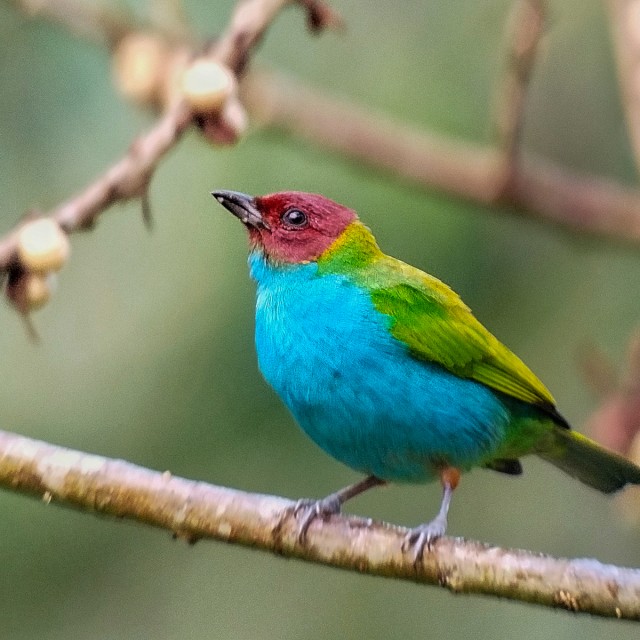
Days 4-6: Southern Caribbean Lowlands
After breakfast we will visit our lead guide Ernesto’s family coffee farm to see how organic coffee goes from the plant to your cup! A large part of what happens on the farm revolves around producing top quality coffee and providing habitat to as many species possible, making for fantastic birding as well. Collared Aracari, Orange-billed Nightingale-Thrush, Yellow-throated Euphonia and the handsome White-eared Ground-Sparrow are generally part of the tour before we head to the new part of the country.
Our next venue on the southern Caribbean coast won’t disappoint. A paradise frequented by beachgoers, surfers, and snowbirds alike, the Puerto Viejo area also happens to be an untapped and underrated birding destination. From the white sands, turquoise waters and intact forest of Cahuita National Park to the indigenous reserves higher in the Talamanca Mountains, we’ll explore a variety of terrain. One of our objectives will be to observe the spectacular raptor migration that occurs here at this time of year, and the natural bottleneck created as the mountains push closer to the coast make the region a prime site for this. We will visit different forested roads and walk at a relaxed pace to enjoy the forest birding where we may find Spotted and Bicolored Antbirds, Purple-throated Fruitcrow, Snowy Cotinga, Black-chested Jay and maybe even a Slaty-breasted Tinamou. Below our feet we’ll hope to spot two brilliant species of Poison-Arrow frogs!
The majority of migrating raptors are Swainson’s Hawks, Turkey Vultures and Broad-winged Hawks, but there are also Peregrine Falcon, Merlin, Osprey, Mississippi Kite, Cooper’s and Sharp-shinned Hawks. Hundreds may pass by in a minute. There may also be thousands of migrating swallows and swifts present, in a spectacle that will surely capture our attention, but we cannot forget the forests around us. Looking around, we can find resident species such as Collared Aracari, Blue Dacnis, Shining Honeycreeper, Red-capped Manakin and Black-headed Tody-Flycatcher. Here and elsewhere several other raptors are possible including: King Vulture, Double-toothed Kite, White-tailed Kite, Common Black Hawk, Roadside Hawk, Short-tailed Hawk, White Hawk, Black Hawk-Eagle, Bat Falcon and Laughing Falcon.
In and around Cahuita National Park we will encounter migrants such as Bay-breasted Warbler, Swainson’s Thrush and Summer Tanager, and more parrots, tinamous, owls, antshrikes, woodcreepers, and trogons, as well as some understory species such as White-flanked Antwren, Black-crowned Antshrike and Checker-throated Stipplethroat. Wetland birds could include Green Ibis and American Pygmy-Kingfisher and we also have a chance to look for the scarce Black-chested Jays near Cahuita. Nights in Puerto Viejo de Talamanca.
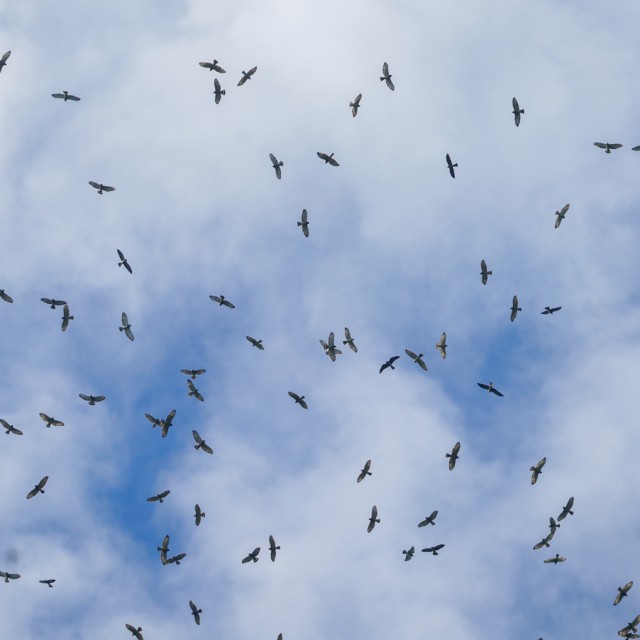
Day 7: Inland to the foothills
After some early morning birding we will work our way inland, stopping at the multiple estuaries on the way for possible shorebirds. We will have lunch at La Hoja Garden for a delicious meal and enjoyable birding at the fruit feeders before reaching our hotel for the evening. Night near Sarapiquí.

Day 8: La Selva Biological Station
After some birding around the lodge and breakfast we visit La Selva Biological Station alongside the Puerto Viejo River to see what the jungle has to reveal. This area is one of the better-studied tropical forests in the world so be prepared for the likes of snakes, sloths, monkeys, bats, anteaters, iguanas, and of course, more birds. Usually our local guide can point out a roosting owl or other dormant animals.
The list of incredible species in La Selva is daunting: Middle American Screech-Owl, Snowy Cotinga, Pied Puffbird, Fasciated Antshrike, Yellow-throated and Olive-backed Euphonias, Black-capped Pygmy-Tyrant, Scarlet-thighed Dacnis, Black-faced Grosbeak, Golden-hooded Tanager, Buff-rumped Warbler, the raucous Great Green Macaw, and many more. After all this it’s time for a cold drink, but after that we’ll check fields in the vicinity for the rare and lovely Nicaraguan Seedfinch. Night near Sarapiquí.
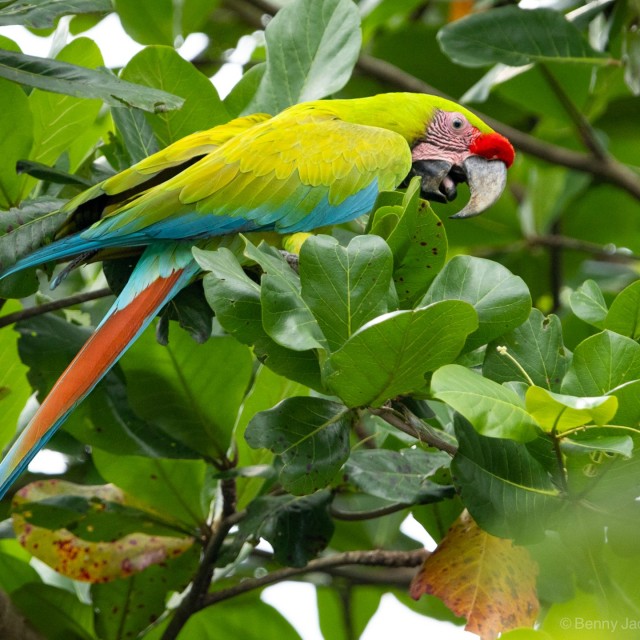
Days 9 - 11: Arenal Observatory Lodge
This morning we will bird a side road near the hotel where we will be looking for different species such as White-fronted Nunbird, Pied Puffbird, White-necked Puffbird, Purple-throated Fruitcrows. After breakfast we drive up into the foothills to Cinchona where we will have lunch as we watch the amazing bird feeders where we have a chance of Northern Emerald Toucanet, Black Guan, Prong-billed and Red-headed Barbet, Crimson-collared Tanager, Silver-throated Tanager and Red-legged Honeycreepers, all with the amazing San Fernando Waterfall in the background.
After lunch we will continue our way northwest to Arenal Observatory Lodge, tracing the base of rugged mountains on the way to La Fortuna, a tourism hub at the foot of Arenal Volcano. After some leg-stretching we arrive at Arenal Observatory Lodge on the other side of the volcano. This location at the northern fringe of the Caribbean slope offers the most species diversity of any site in Costa Rica and it is a fun place to end a trip. The outdoor jacuzzi, canopy lookout tower and a busy feeder setup are all nice touches, too.
Around the lodge grounds we have the potential for some good birds. Yellow-eared Toucanet, Lovely Cotinga and Semiplumbeous Hawk require some luck. Army ant swarms are common and can offer exciting viewing of Spotted, Ocellated and Bicolored Antbirds, among many other species. Rufous-tailed Jacamars sally out to catch butterflies and odd grunting noises come from Masked and Black-tailed Tityras. Mammals include Three-toed Sloth, Spider Monkey, Tamandua and Coatimundi. If it is clear, the view of the volcano is breathtaking!
We spend our time here exploring trails and roads through excellent forest, looking for more Caribbean-slope specialties. This is a great place to find Keel-billed Motmot, Ornate Hawk-Eagle and Black-crested Coquette. Conspicuous species like White-necked Puffbirds and Long-tailed Tyrants perch on exposed dead snags, and manakins will be displaying at their leks on the forest floor. Mixed-species flocks pass by with a dozen or more species: foliage-gleaners, flycatchers, dacnis, euphonias, warblers, woodpeckers and more. The birding is nothing short of exceptional in this area! Nights at Arenal Observatory Lodge.
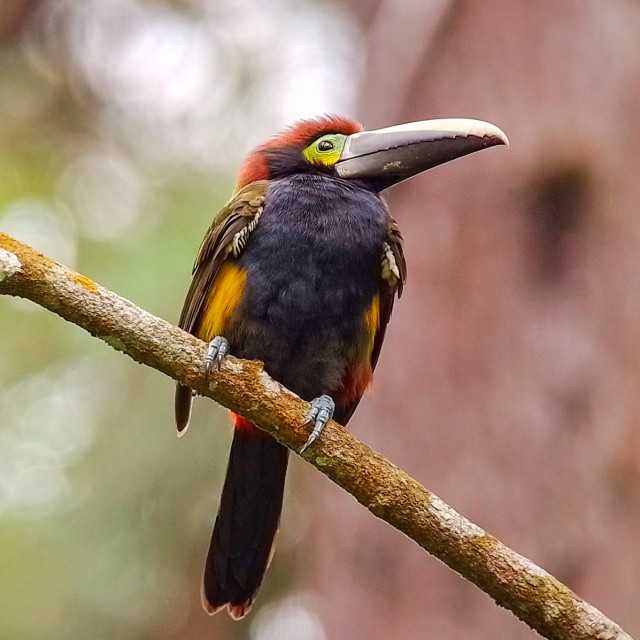
Day 12: Back to San José
After a morning excursion we will pack up and head back to the city, making a stop to check out some feeders at a highway restaurant. Like many other venues on the trip this is a great spot for photography. Speckled, Silver-throated, Bay-headed and Emerald Tanagers are eye-popping subjects, and so are Red-legged Honeycreepers and hummingbirds like the Green Thorntail and endemic Coppery-headed Emerald. When we arrive at our hotel soon after we’ll be in a drier habitat and close to the airport. The quaint grounds here offer a pool and some bonus viewing of species not seen elsewhere on the tour: Ferruginous Pygmy Owl, Spot-breasted Oriole and Cinnamon Hummingbird are possible. Night near San José.

Day 13: Departure
Our Costa Rica Caribbean birding tour concludes today. Breakfast is available at our hotel near the airport, but you can leave anytime today. The airport is accessible via a short transfer.
What to Expect
What to Expect
Overview
The Costa Rica: Caribbean Mountains to Coast tour is a moderately paced birding tour. Expect optional early morning, before-breakfast walks on most days. Almost without exception it is best to begin birding at daybreak in the tropics, when bird activity and song are at their peak. In forest regions, we concentrate on “edge” birding until the light is sufficient to enter forest trails. Often bird activity slackens off by noon, when we may return to our hotel for lunch and a short siesta. We bird again in the coolness of the late afternoon, occasionally staying out after dusk to search for nightbirds. We have at least two nights in each birding zone so there is some opportunity to relax between outings.
Food
We generally have breakfast at the hotel before we head out for the day. We often take a picnic lunch in the field, but will occasionally stop at a restaurant for lunch. In the evening we eat at the hotel or lodge where we are staying. At this time we discuss the day’s activities, review the list of birds and other wildlife that we have seen and heard, and prepare for the next day.
Accommodation
Generally we stay in standard hotel rooms or rustic lodges, in remote locations, close to where we want to go birding.
Walking
The walking on this tour is rated easy to moderate, however participants should be prepared for the potential impact of heat and humidity, which can affect comfort and stamina. Generally we do not walk further than 5 km (3 miles), however the terrain can be uneven and muddy. The maximum elevation on this tour is approximately 3,000 m (10,000 ft) during our day on the Irazú Volcano. Our accommodations in the highlands sit at 2,200 m (7,200 ft), but other accommodations are at less than 1,500 m (5,000 ft).
Driving
This tour involves a moderate amount of driving, as we relocate to several amazing locations throughout the tour. Most accommodations are 2-3 hours apart, except one which is an hour away and another four hours distant. We will take frequent rest stops and birding stops on these travel days. On the non-relocating days, we will drive just short distances to amazing birding locations. Throughout the tour, we travel on paved roads, however there will be some twisty roads when driving through the mountains.
Climate
Temperatures will range from warm to hot, with an often daily mixture of sun, cloud, showers and rain. In general, the Caribbean is a wetter area but showers are often at night. Mosquitoes are not usually a problem but can be active in the evenings or in certain areas.
Frequently Asked Questions
Frequently Asked Questions
Tour Video
Tour Video
Watch more tour videos and subscribe to our YouTube Channel
More VideosFeatured Wildlife
Featured Wildlife
While we cannot guarantee sightings of the birds or mammals listed below, we believe that encountering these species is quite likely during this tour.
- Resplendent Quetzal
- Great Green Macaws
- Black-crested Coquette
- Sulphur-rumped Tanager
- Swainson’s Hawk
- Roseate Spoonbill
- Keel-billed Motmot
- Great Curassow
- Black-chested Jay
- Three species of primates
- Poison Arrow and Tree Frogs
Past Tour Checklists
Past Tour Checklists
View the list of birds and other wildlife we encountered on our past tours.
- Costa Rica: Caribbean Mountains to Coast species list 2025 (Oct 19-30) (eBird)
- Costa Rica: Caribbean Mountains to Coast species list 2025 (Oct 1-12) (eBird)
- Costa Rica: Caribbean Mountains to Coast species list 2024 (Oct 14 - 25) (eBird)
- Costa Rica: Caribbean Mountains to Coast species list 2023 (eBird)
- Costa Rica: Caribbean Mountains to Coast species list 2022(pdf)
- See More...
- Costa Rica Caribbean 2021 species list (ebird)
Trip Reports & Inspiration
Trip Reports & Inspiration
Costa Rica: Caribbean Mountains to Coast 2025 Trip Report (Oct 1 -12)
Costa Rica: Caribbean Mountains to Coast Trip Report (Oct 1 -12, 2024)
Costa Rica Caribbean Trip Report (Oct 14 - 25, 2024)
Costa Rica Caribbean Trip Report (Oct 2023)
Costa Rica: Mountains to Caribbean Trip Report 2022
Best ways to find birds in the tropics
Costa Rica: Caribbean Mountains to Coast October 2021




